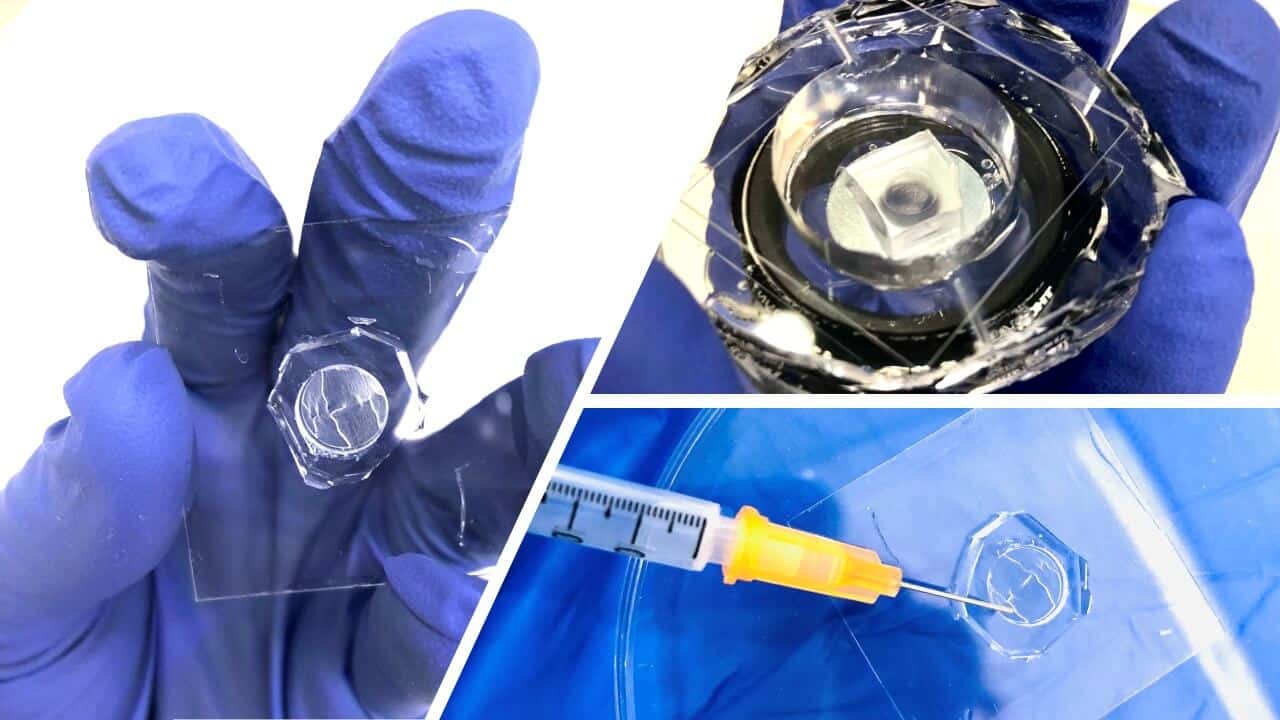Researchers printed components using a standard XNUMXD printer and immersed them in a liquid

The prestigious journal Nature Communications. Reports a dramatic technological improvement in the creation of precise optical components: printing the components using a standard XNUMXD printer and submerging them in a liquid. The development was led The doctoral student Reot Orange-Kedem and Dr. Yoav Shechtman from the Faculty of Biomedical Engineering At the Technion.
The production of precise optical components is a technological-scientific challenge whose consequences extend over many scientific and applied fields, including microscopy, telescopes, materials research and medical imaging. The challenge is particularly great in the production of tiny components that require production and precision on the nano scale (millionths of a millimeter). The conventional production methods of these components are very complicated, expensive, long and require strict environmental conditions (clean rooms), and sometimes they are limited to the production of certain shapes only.
Technion researchers have developed a new production method that allows not only to produce efficient and precise optical components, but also to overcome fundamental limitations in conventional production methods. All of this is performed with a standard XNUMXD printer, and the result: the components become cheaper by several orders of magnitude and the possibility opens up to produce components in shapes that were not possible until now, and in the future even components that have never been produced.
The "trick" developed by Dr. Shechtman and Reut Orange-Kedem is the deposition of the optical component in a special liquid, a move that makes the optical component appear 1,000 times larger. This "trick" is based on the selection of a liquid adapted to the component in terms of the refractive index - a quantity that describes the speed of light inside the material. The special liquid is chosen so that its refractive index is very close to the refractive index of the optical component, thus its optical power is "weakened" by several orders of magnitude in relation to its power in air. This fact requires an increase in the optical component in order for it to fulfill its purpose. The advantage of the method is that the immunity of the optical component to manufacturing errors also increases, and thus it is possible to print the entire component with a standard XNUMXD printer (in fact, a template is printed into which a transparent polymer is poured that constitutes the component itself). The researchers explain that this is similar to the evolutionary adaptation of the fish eye, which is optically different from the human eye, partly due to its need to function in one environment (water) where the refractive index is close to the refractive index of the eye, unlike the situation in air.
To test the applicability of the technology, the researchers photographed particles and cell cultures and thus demonstrated its effectiveness in imaging inanimate and living components in XNUMXD. The technology, according to them, may be relevant to a wide range of applications including laser processing, communication, precise microscopy and the production of solar devices and electronic components (lithography). Furthermore, the new technology is very flexible and can be adapted to changing experimental conditions and environmental conditions.
Dr. Yoav Shechtman is a member of the Faculty of Biomedical Engineering and the Russell Berry Nanotechnology Institute (RBNI) and the Lori Lockey Interdisciplinary Center for Life Sciences and Engineering, and Reut Orange-Kedem is a PhD student under his supervision. The current research was supported by an ERC grant (Horizon 2020 program), the Zuckerman Foundation and the Innovation Authority.
for an article in the scientific journal Nature Communications. click here
For pictures click here
In pictures:
- Dr. Yoav Shechtman
- Reut Orange-Kedem
- In the left picture and in the bottom picture on the right - the optical component that is created using a template printed on a commercial XNUMXD printer. Top right - the optical component is placed in a container to accommodate a liquid with a suitable refractive index.

2 תגובות
Great, of great importance and a huge impact on global technology. The academic paradox is that someone who does a doctorate in literature, poetry, philosophy..historical research scales and eggshells with no contribution to humanity, is considered an intellectual even though we are both ignorant of the country in important areas, his degree is equivalent to the degree of a physicist, mathematician, engineer. It is mandatory to define a unique degree in engineering for those who invent and innovate technology.
The explanation below the picture appears twice. Correct.
It is not explained how the optical component works in the liquid.